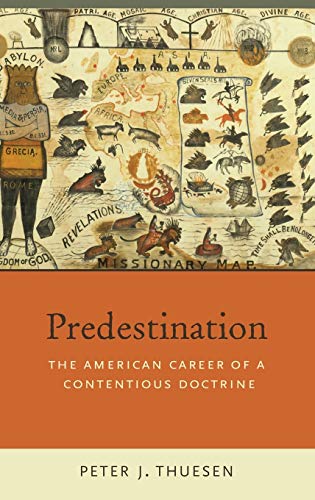Paul the Missionary: Realities, Strategies and Methods
Written by Eckhard J. Schnabel Reviewed By Brian J. TabbWas Paul a “cross-cultural” missionary? Did he have a strategy? How might Paul’s missionary work relate to present missiological concerns like contextualization and financial partnerships? These are some of the questions addressed in Paul the Missionary by Professor Eckhard Schnabel of Trinity Evangelical Divinity School. Schnabel writes “to challenge pastors and missionaries, students and practitioners to read Paul again, more closely than before, and to evaluate the goals and the methods of their pastoral and missionary ministry in the light of the missionary work of the apostle” (p. 14). Two key assertions by the author give a flavor for the book’s argument. First, Paul’s missionary methods cannot be separated from the message that he preached as a missionary” (p. 29). Second, “Missionary work and theological reflection about the gospel depend on one another” (p. 140).
In the introduction, Schnabel stresses that “mission” characteristically involves both intentionality and movement, as illustrated by Jesus’ own understanding of his “mission” in Luke 4:18–19. The primary intention of Paul was “to reach as many people as possible with the gospel,” and so he was willing to move “to any locale in which people would be willing to listen to the message of Jesus Christ” (p. 35).
In chapter 1, Schnabel analyzes the account of Paul’s missionary work in Acts. In contrast to popular descriptions of Paul’s “three missionary journeys,” Schnabel more precisely identifies fifteen phases or locations of Paul’s missionary work. Several of these phases—such as Arabia, Spain, and Crete—are implied from Paul’s letters or other sources (e.g., 1 Clem 5:6–7). The author notes that Paul’s missionary career was not begun in Antioch in Acts 13:1–4, but in Damascus and Arabia nearly fifteen years before.
In chapter 2, Schnabel examines Paul’s letters and asserts that the apostle understood himself fundamentally as God’s servant, called to proclaim the crucified and risen Jesus Christ in total dependence on God for success in missionary work. In chapter 3, “The Missionary Message of the Apostle Paul,” Schnabel asserts, “The central emphasis of Paul’s missionary preaching was the proclamation of Jesus as the Messiah of the Jewish people and the Kyrios of the world” (p. 183). In discussing Acts 17:22–31, Schnabel notes that while Paul’s speech in Athens includes “elements of contact” with his hearers (p. 171), the apostle’s response to their religious beliefs and practices “was, ultimately, not accommodation but confrontation” (p. 182).
Paul’s missionary goals and methods are addressed in chapters 4–5, respectively. Paul did not follow a clearly defined plan to ensure ministry success.
The apostle’s primary missionary task was gospel proclamation, and his only real “strategy” was to utilize all venues conducive to disseminating the news of Jesus Christ. The apostle’s patterns, such as preaching in synagogues and organizing converts for private meetings, are best explained by the convergence of Paul’s basic convictions about the gospel message and the historical-political realities in which he found himself. Schnabel critically analyzes modern definitions of culture in chapter 5, concluding that they do not readily fit with the realities of the Greco-Roman world. He argues that Paul was not truly a “cross-cultural” missionary, as he did not learn a new language or move into a new cultural context. Rather, the apostle’s bicultural identity meant he was “able to function comfortably … both in Jewish and in Greco-Roman culture” (pp. 329–30).
Chapter 6 addresses the missionary task in the twenty-first century. Here the author discusses various contemporary issues such as the seeker-sensitive movement, the challenge of culture, and global partnerships. Schnabel thoroughly critiques McGavran’s “homogeneous unit principle” and contends, “Paul established local assemblies of followers of Jesus irrespective of their ethnic, cultural, or social identity, insisting on the unity of the local expression of the people of God” (pp. 409–10). He rightly stresses that ministry methods must not be adopted based on effectiveness but on faithfulness to the gospel message, since methods are not neutral, but “influence the content of what is being communicated” (p. 453).
Overall, Schnabel’s work is strong exegetically, though his analysis in several instances lacks precision. For example, he asserts that Paul and Barnabas may have planned a new missionary initiative to Cyprus for some time prior to being sent out in Acts 13:1–4. However, the text is silent regarding their plans beyond Antioch but stresses the Holy Spirit’s initiative in setting apart the missionaries for a new work. Later, when discussing the same passage Schnabel sets up a false-dichotomy when he claims that they “are not sent by the church but by the Holy Spirit” (p. 392), though Acts 13:3 explicitly records that the church prayerfully and obediently sent them off. Further, Schnabel’s claim on page 282 that Jesus, like Paul after him, “preached before as many people as possible” is questionable. Jesus does address the crowds and synagogues, but his main ministry focus was the disciples, and he ministered almost exclusively within the traditional borders of Israel, while Paul traveled to major cities throughout the Greco-Roman world. Surprisingly, Schnabel does not treat in detail the important themes of suffering and persecution in Paul’s missionary calling, experience, and instruction (cf. Acts 9:15–16; 14:22; 20:23–24), even though these issues have particular urgency for the burgeoning missions efforts of the global South.
There is some overlap with the author’s earlier two-volume Early Christian Mission (IVP, 2004), though Paul the Missionary seeks to address a broader audience of pastors, missionaries, and students with a view toward application, which comes mostly in chapter 6. Unfortunately, the book’s length and technical discussion at various points may put this excellent book out of reach for some of the intended readership. In the preface and throughout, Schnabel relates his work to Roland Allen’s classic Missionary Methods: St. Paul’s or Ours(London, 1912). However, Paul the Missionary is not merely an updating of Allen’s work but is a substantial, fresh analysis of the apostle in light of his first-century context with a view to modern ministry challenges. In conclusion, Schnabel’s greatest contribution is his interdisciplinary synthesis of biblical exegesis and missiology. Schnabel’s book calls pastors and missionaries to reassess their ministry aims and methods in light of Paul’s, while challenging students and scholars toward a deepened concern for the church and mission.
Brian J. Tabb
Brian Tabb is president and professor of biblical studies at Bethlehem College and Seminary in Minneapolis and general editor of Themelios.
Other Articles in this Issue
Most of us, I suspect, develop fairly standard ways, one might even say repetitive ways, to appeal to the motivations of our hearers when we preach the gospel...
How to Write—and How Not to Write—A Review: An Appreciative Response to Reviews of Ancient Near Eastern Themes in Biblical Theology by Dempster and Edgar
by Jeffrey J. NiehausI want to thank Themelios for the unusual opportunity to interact with two reviewers of my book Ancient Near Eastern Themes in Biblical Theology...
Parallels, Real or Imagined? A Review Article of Jeffrey J. Niehaus, Ancient Near Eastern Themes in Biblical Theology
by William EdgarWhen I came to Westminster Theological Seminary in Philadelphia as a young student in the 1960s, two things struck me...
Why Evangelicals Should Ignore Brian McLaren: How the New Testament Requires Evangelicals to Render a Judgment on the Moral Status of Homosexuality
by Denny BurkIn 2006 on Christianity Today’s leadership blog, Pastor Brian McLaren urged evangelical leaders to find a “Pastoral Response” to their parishioners on the issue of homosexuality...
A Member of the Family or a Stranger? A Review Article of Jeffrey J. Niehaus, Ancient Near Eastern
by Stephen DempsterWe cannot overstate how important knowing the context is for understanding the significance of any communication, whether that is a simple word, sentence, paragraph, larger text, sign, photograph, or cultural cue...







